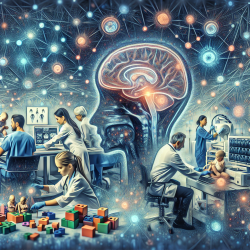Introduction
In the ever-evolving field of drug discovery, the integration of cutting-edge technologies is crucial for enhancing efficiency and accuracy. A recent review titled The Synergy between Deep Learning and Organs-on-Chips for High-Throughput Drug Screening explores the promising intersection of deep learning and organs-on-chips (OoCs) in drug screening. This article aims to provide practitioners with insights into how these advancements can be leveraged to improve their skills and encourage further research.
Understanding the Synergy
Organs-on-chips are sophisticated microfluidic systems that mimic the physiological functions of human organs. These chips have become indispensable tools in drug screening, offering a more accurate representation of human biology compared to traditional methods like animal testing. Deep learning, a subset of artificial intelligence, excels in processing and analyzing large datasets, making it an ideal partner for the data-intensive nature of OoCs.
Key Findings from the Review
The review highlights several successful applications of deep learning in OoCs, which have led to significant improvements in drug screening processes:
- Enhanced Image Processing: Deep learning algorithms, such as convolutional neural networks (CNNs), have been employed to improve image quality and segmentation in OoCs, facilitating more precise analysis of cellular behavior.
- Automated Data Analysis: The integration of deep learning has enabled the automation of data analysis, reducing the time and effort required for manual interpretation and increasing the throughput of drug screening.
- Predictive Modeling: Deep learning models have been used to predict the efficacy and toxicity of drug candidates, helping researchers identify promising compounds earlier in the development process.
Applications and Future Directions
The synergy between deep learning and OoCs holds immense potential for revolutionizing drug screening. Some potential applications include:
- Personalized Medicine: By simulating individual patient responses, OoCs combined with deep learning can pave the way for personalized drug treatments, improving patient outcomes.
- Reduced Animal Testing: The accuracy and efficiency of OoCs can significantly reduce the reliance on animal models, addressing ethical concerns and lowering costs.
- Accelerated Drug Discovery: The ability to rapidly screen large numbers of compounds with high accuracy can expedite the drug discovery process, bringing new treatments to market faster.
Challenges and Considerations
Despite the promising advancements, several challenges remain in the integration of deep learning and OoCs:
- Data Quality and Quantity: High-quality, annotated datasets are essential for training effective deep learning models. Ensuring the availability of such data is a critical challenge.
- Interdisciplinary Collaboration: Successful implementation requires collaboration between experts in biology, engineering, and computer science, highlighting the need for interdisciplinary teams.
- Scalability: While OoCs offer improved accuracy, scaling these systems for widespread use in the pharmaceutical industry remains a challenge.
Conclusion
The integration of deep learning and organs-on-chips represents a transformative approach to drug screening, offering enhanced accuracy, efficiency, and ethical considerations. Practitioners are encouraged to explore these technologies further and consider their potential applications in their work. To read the original research paper, please follow this link: The Synergy between Deep Learning and Organs-on-Chips for High-Throughput Drug Screening: A Review.










